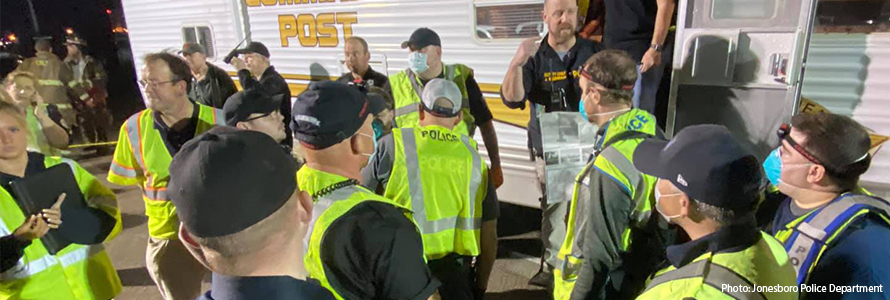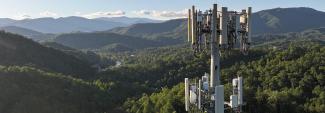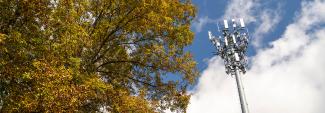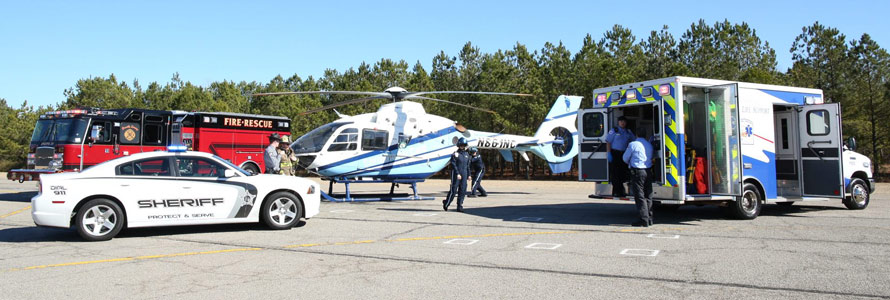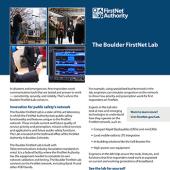When a violent tornado hit northeast Arkansas in March, local communities had little time to prepare. There were only fourteen minutes from the time that the National Weather Service issued a tornado warning to when the storm touched down in Jonesboro. The EF-3 tornado intensified rapidly, growing to 140 miles per hour and 600 yards wide as it sped over a path of 12.5 miles in Craighead County. The tornado caused major destruction to homes, businesses, and a shopping mall. Vehicles were mangled, the local airport damaged, and a nearby train derailed. Despite the wreckage, FirstNet kept first responders connected and communicating throughout the storm and its aftermath.
FirstNet users put the network to the test
First responders from across the region came together to respond after the storm. Many were already FirstNet users, including the City of Bay police and fire departments. Subscribers since 2018, they have long understood the benefits of FirstNet’s capabilities and the importance of interoperable communications during incidents. Two years after joining, they were able to appreciate the network’s reliability and performance even during a major natural disaster.
“After the tornado passed, [the area] was inundated with first responders from all over. My FirstNet service was never interrupted, no dropped calls or call failure, and the internet was spot on,” said City of Bay Chief of Police Paul Keith.
Preparation and partnerships are critical
Because of forethought and planning, first responders in Craighead County were prepared to respond and communicate during the storm. They were also prepared because of a prevailing commitment to collaboration among the community’s public safety agencies, the First Responder Network Authority (FirstNet Authority), and AT&T.
“The fire and police department integrated together. We depend on each other so we need that communication to be able to talk to one another,” said Chief Paul. “FirstNet and AT&T from the get-go have been super. Anytime we had any kind of question or comment, they’re always there to listen and always have an answer for us immediately.”
For every state, AT&T assigns a liaison to coordinate with the state-level emergency operations center to prepare for any events or disasters. Setting up these partnerships in advance allows for AT&T to understand the local needs and to provide technology that fits best. Establishing working relationships beforehand also helps things to run smoothly when disaster strikes, and responders on the ground know who to contact in an emergency. Similarly, the FirstNet Authority has a public safety advisor for each state who works closely with public safety agencies to collect feedback and capture lessons learned about their experiences using the network. This information is used to help better understand how public safety is integrating broadband communications into disaster response.
“Coordination, staging resources, basically just figuring out what you need and where you need it is a huge part of the initial response,” said Craighead County Deputy Sheriff Dustin Norwood. “FirstNet built by AT&T truly impressed me during the hours after the response.”
FirstNet is built for emergencies
FirstNet has been purpose-built for the demands of public safety communications. First responders can trust in FirstNet’s resilient connection because reliability, redundancy, and security are built into the network. For example, when commercial towers failed during the Jonesboro tornado, FirstNet continued to provide coverage and capacity to first responders in the rural area. Even with one tower sustaining damage, overlapping coverage from nearby towers provided excellent terrestrial coverage. FirstNet subscribers were able to maintain communications whereas other responders struggled to connect to other networks.
“I would recommend FirstNet to any first responder,” said local firefighter and incident Communications Unit Leader Travis Williams. “FirstNet for me worked great. I was very busy during the response, and I never had one failure of service.”
If necessary, a deployable network asset, such as a Satellite Cell on Light Truck or Cell on Wheels, would have been sent to provide satellite coverage. The FirstNet Response Operations Group at AT&T, led by former first responders, closely monitored the situation to determine what was needed. “We really didn’t need [a deployable],” said Williams. “Everyone I talked to using FirstNet had a good experience with no failures.”
Interested in learning more about how FirstNet is helping public safety agencies prepare for disasters? Contact your local FirstNet Authority Public Safety Advisor and sign up for our quarterly newsletters.
For more information on FirstNet products and services, visit FirstNet.com


